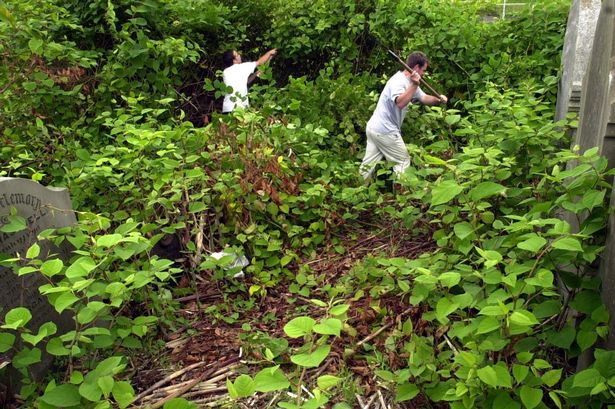Merseyside is home to some of the country's worst-hit areas for Japanese knotweed.
The plant, which is native to East Asia, was introduced to the UK in 1850 by German botanist Philipp Franz von Siebold. However, Philipp was unaware that the species was so invasive.
The Environment Agency states the knotweed is "indisputably the UK's most aggressive, destructive and invasive plant". It is notorious for damaging property and can cause house prices to drop in areas where it is found commonly.
READ MORE: Gino D'Acampo's Liverpool restaurant slapped with one star hygiene rating
Those selling their homes are required by law to disclose if their property is or has been affected by the plant. However, there are a number of effective treatments.
According to GOV.uk, spraying or injecting the stems with chemicals can be an effective treatment to stop knotweed spreading. Additionally, you’ll have to respray and it usually takes at least three years to treat Japanese knotweed.
You must only use approved herbicides and some chemicals require a certificate of competence and certain permissions from government bodies.
The plant is a particular problem in Merseyside. A new map from invasive plant specialists Environet shows homeowners and homebuyers exactly where the weed is growing across the country and it is not great reading for our region.
According to the map, St Helens is the worst hit part of our county. It shows that there are 463 occurrences within a four kilometre area at the south of the town, 441 in 4km near Sutton Manor and 437 within 4km in the north of St Helens.
Prescot and Whiston are also hit badly, a 4km section of the map around those towns had 292 occurrences of the knotweed. The area around Belle Vale is also affected significantly, with 255 cases in 4km.
A 4km area near Bootle had 126 cases, 130 in an area near Crosby, while an area in the vicinity of Dingle and Toxteth at the south of the city centre saw 160 occurrences. At the other end of the scale, Wirral has no areas which are considered hot spots on the map,
Knotweed can grow in most soil conditions found in the UK, but it is particularly prominent in man-made habitats, such as roadsides, waste ground, railway embankments and cuttings and spoil tips. It’s also commonly found along rivers and streams.
Read the government's full advice on Japanese Knotweed here.
READ NEXT
Police officer faces dangerous driving probe over young woman's death
'I'm more broken than before' admits mum after losing nine stone
Thomas Cashman in court ahead of Olivia Pratt-Korbel trial
Gino D'Acampo's Liverpool restaurant slapped with one star hygiene rating
Iceland fans praise 'tastiest ever' Slimming World meal
Share a Random Act of Kindness and celebrate Merseyside's warm heart

